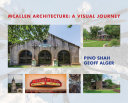Architects of Buddhist Leisure: Socially Disengaged Buddhism in Asia’s Museums, Monuments, and Amusement Parks
اپریل 2017 · University of Hawaii Press
4.4star
5 جائزےreport
ای بک
240
صفحات
family_home
اہل ہے
info
reportدرجہ بندیوں اور جائزوں کی تصدیق نہیں کی جاتی ہے مزید جانیں
اس ای بک کے بارے میں
Buddhism, often described as an austere religion that condemns desire, promotes denial, and idealizes the contemplative life, actually has a thriving leisure culture in Asia. Creative religious improvisations designed by Buddhists have been produced both within and outside of monasteries across the region—in Nepal, Japan, Korea, Macau, Hong Kong, Singapore, Laos, Thailand, and Vietnam. Justin McDaniel looks at the growth of Asia’s culture of Buddhist leisure—what he calls “socially disengaged Buddhism”—through a study of architects responsible for monuments, museums, amusement parks, and other sites. In conversation with noted theorists of material and visual culture and anthropologists of art, McDaniel argues that such sites highlight the importance of public, leisure, and spectacle culture from a Buddhist perspective and illustrate how “secular” and “religious,” “public” and “private,” are in many ways false binaries. Moreover, places like Lek Wiriyaphan’s Sanctuary of Truth in Thailand, Suối Tiên Amusement Park in Saigon, and Shi Fa Zhao’s multilevel museum/ritual space/tea house in Singapore reflect a growing Buddhist ecumenism built through repetitive affective encounters instead of didactic sermons and sectarian developments. They present different Buddhist traditions, images, and aesthetic expressions as united but not uniform, collected but not concise: Together they form a gathering, not a movement.
Despite the ingenuity of lay and ordained visionaries like Wiriyaphan and Zhao and their colleagues Kenzo Tange, Chan-soo Park, Tadao Ando, and others discussed in this book, creators of Buddhist leisure sites often face problems along the way. Parks and museums are complex adaptive systems that are changed and influenced by budgets, available materials, local and global economic conditions, and visitors. Architects must often compromise and settle at local optima, and no matter what they intend, their buildings will develop lives of their own. Provocative and theoretically innovative, Architects of Buddhist Leisure asks readers to question the very category of “religious” architecture. It challenges current methodological approaches in religious studies and speaks to a broad audience interested in modern art, architecture, religion, anthropology, and material culture.
Despite the ingenuity of lay and ordained visionaries like Wiriyaphan and Zhao and their colleagues Kenzo Tange, Chan-soo Park, Tadao Ando, and others discussed in this book, creators of Buddhist leisure sites often face problems along the way. Parks and museums are complex adaptive systems that are changed and influenced by budgets, available materials, local and global economic conditions, and visitors. Architects must often compromise and settle at local optima, and no matter what they intend, their buildings will develop lives of their own. Provocative and theoretically innovative, Architects of Buddhist Leisure asks readers to question the very category of “religious” architecture. It challenges current methodological approaches in religious studies and speaks to a broad audience interested in modern art, architecture, religion, anthropology, and material culture.
درجہ بندی اور جائزے
4.4
5 جائزے
مصنف کے بارے میں
Justin Thomas McDaniel is professor of Buddhist studies and chair of the Department of Religious Studies at the University of Pennsylvania.
اس ای بک کی درجہ بندی کریں
ہمیں اپنی رائے سے نوازیں۔
پڑھنے کی معلومات
اسمارٹ فونز اور ٹیب لیٹس
Android اور iPad/iPhone.کیلئے Google Play کتابیں ایپ انسٹال کریں۔ یہ خودکار طور پر آپ کے اکاؤنٹ سے سینک ہو جاتی ہے اور آپ جہاں کہیں بھی ہوں آپ کو آن لائن یا آف لائن پڑھنے دیتی ہے۔
لیپ ٹاپس اور کمپیوٹرز
آپ اپنے کمپیوٹر کے ویب براؤزر کا استعمال کر کے Google Play پر خریدی گئی آڈیو بکس سن سکتے ہیں۔
ای ریڈرز اور دیگر آلات
Kobo ای ریڈرز جیسے ای-انک آلات پر پڑھنے کے لیے، آپ کو ایک فائل ڈاؤن لوڈ کرنے اور اسے اپنے آلے پر منتقل کرنے کی ضرورت ہوگی۔ فائلز تعاون یافتہ ای ریڈرز کو منتقل کرنے کے لیے تفصیلی ہیلپ سینٹر کی ہدایات کی پیروی کریں۔





